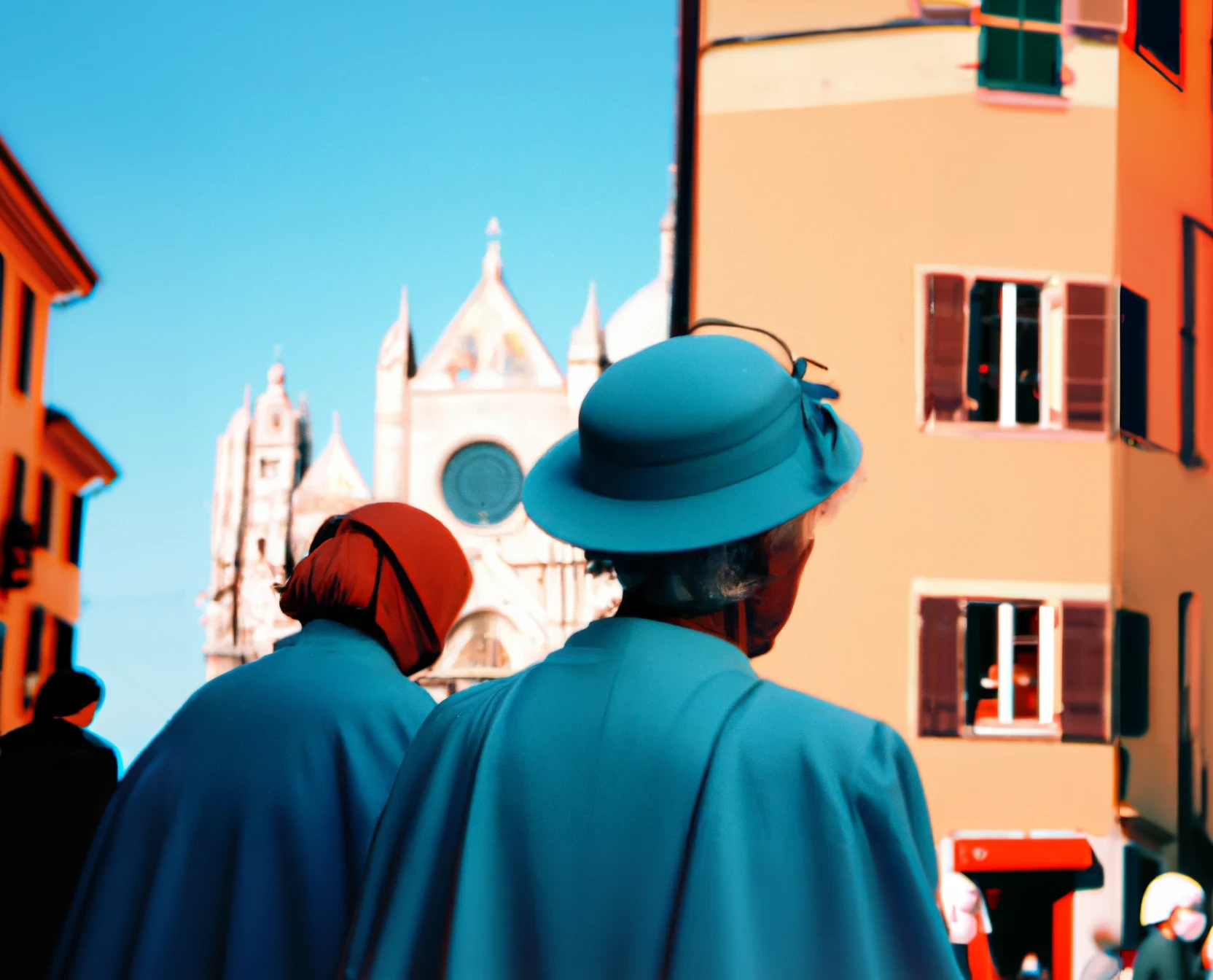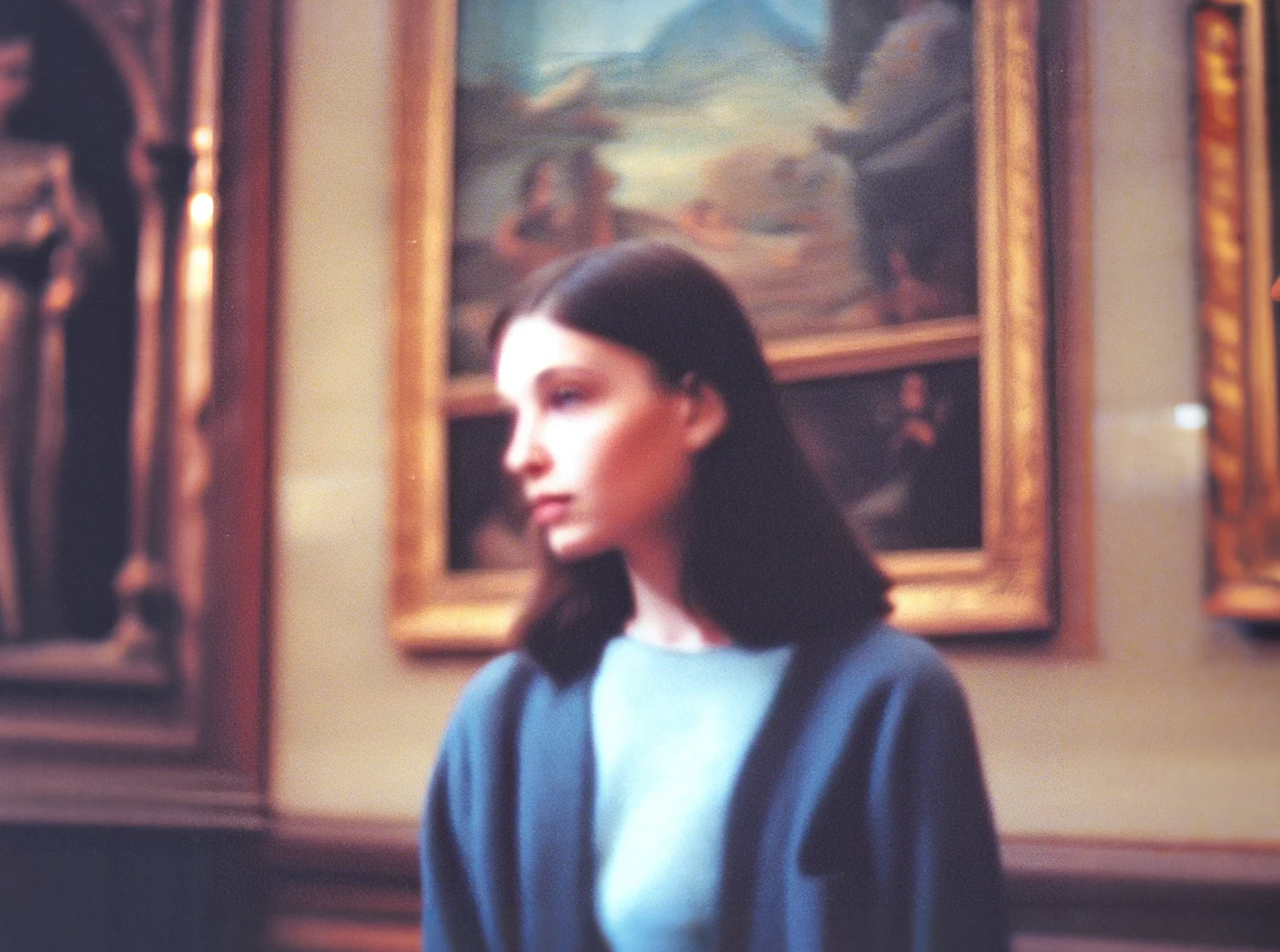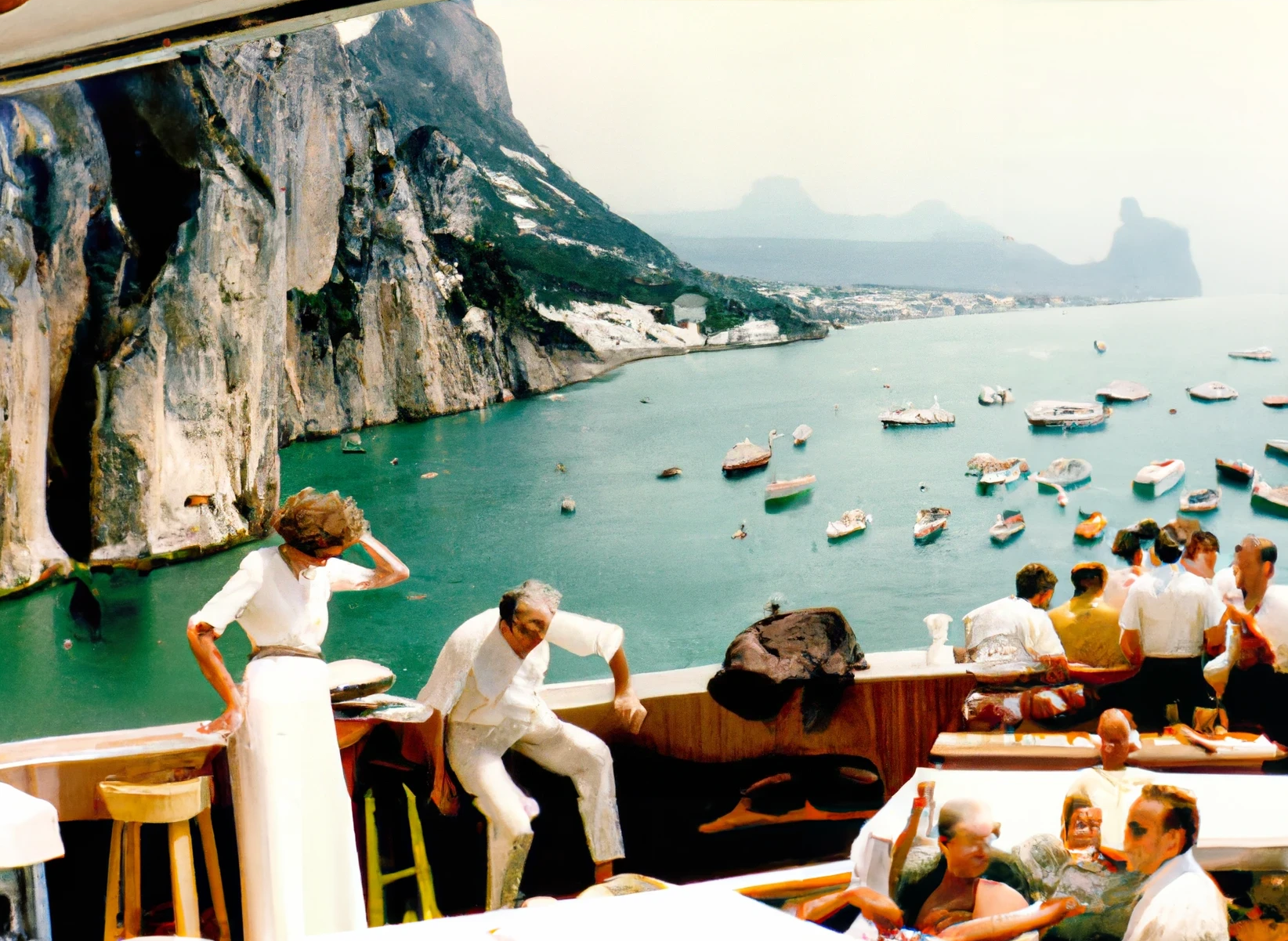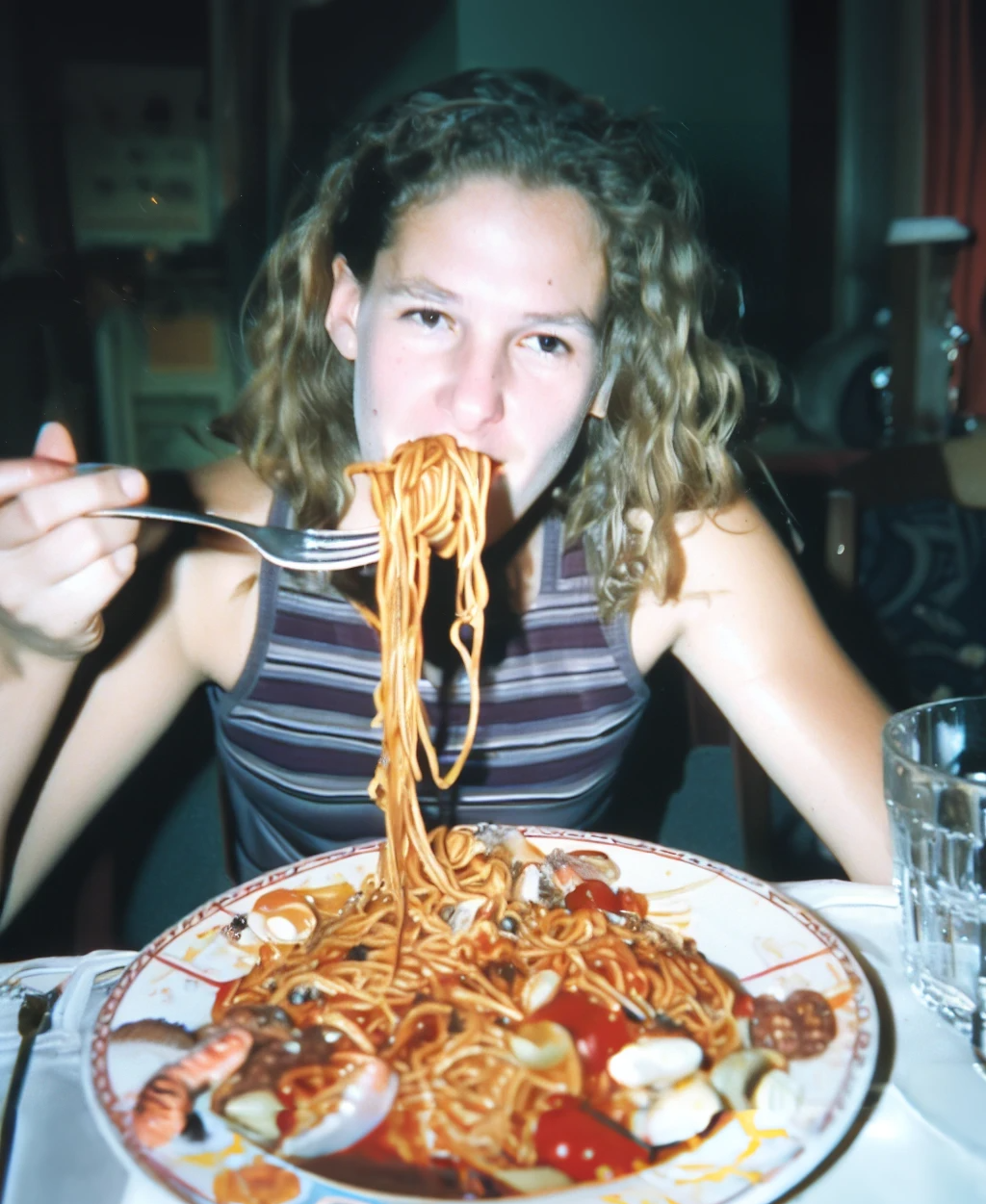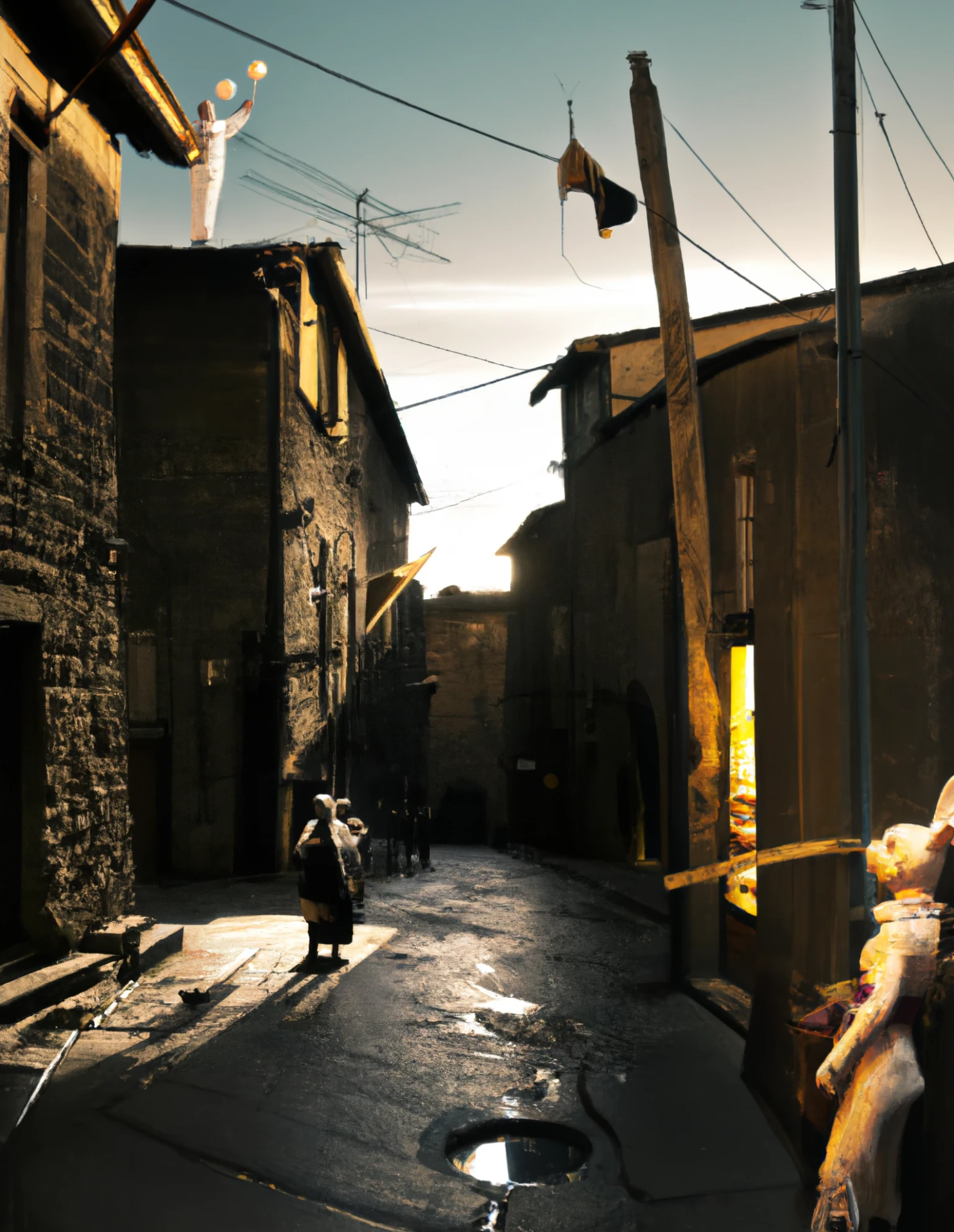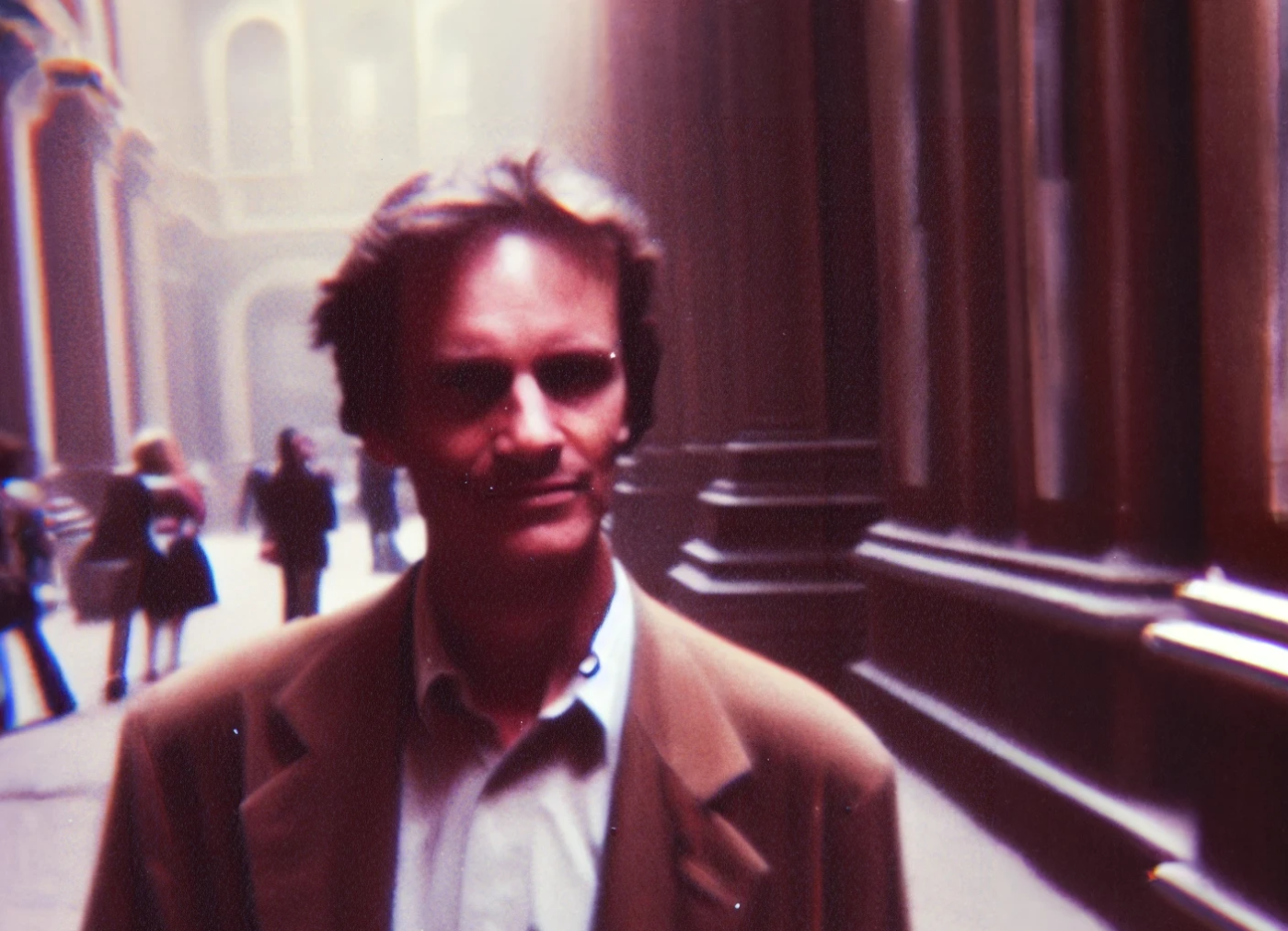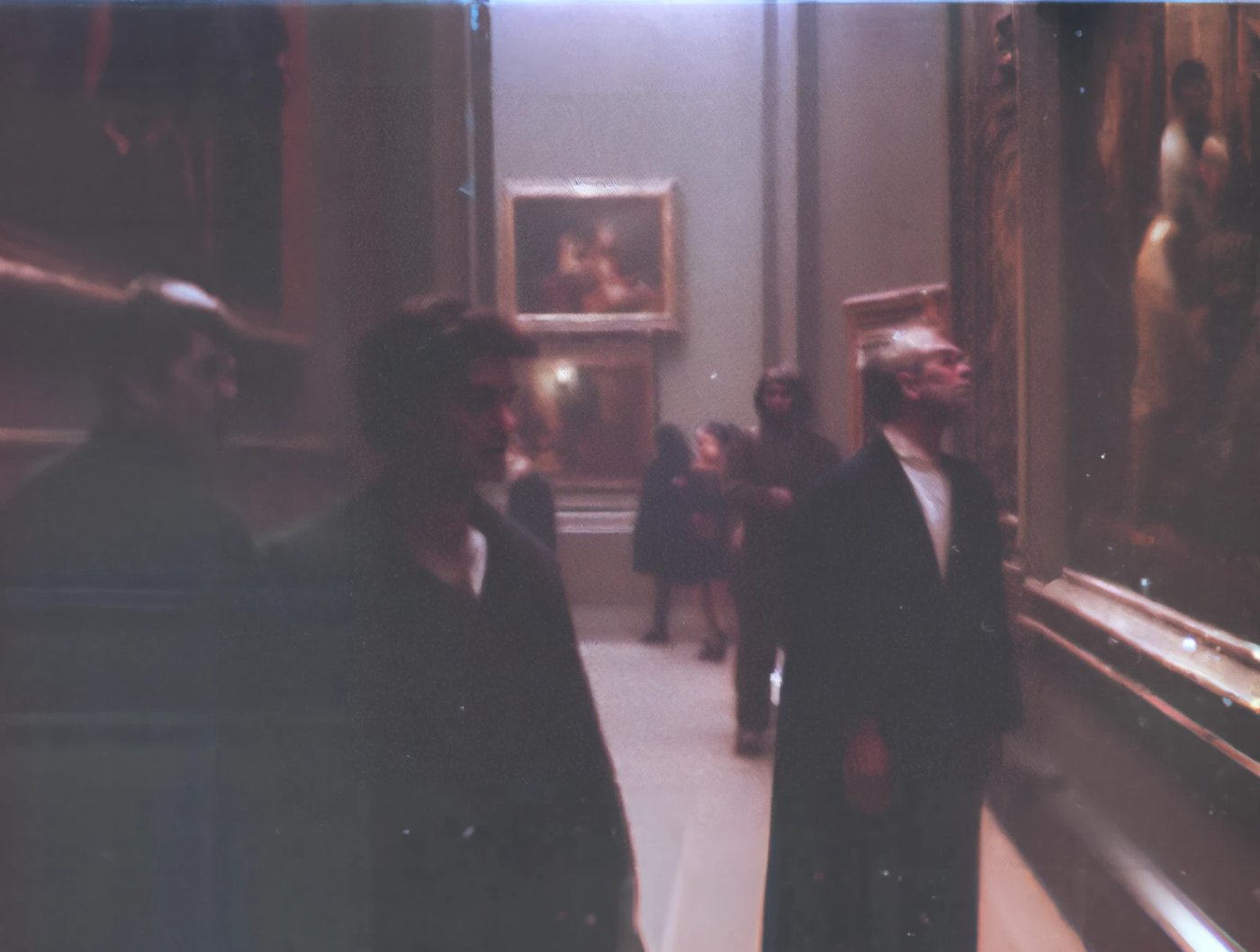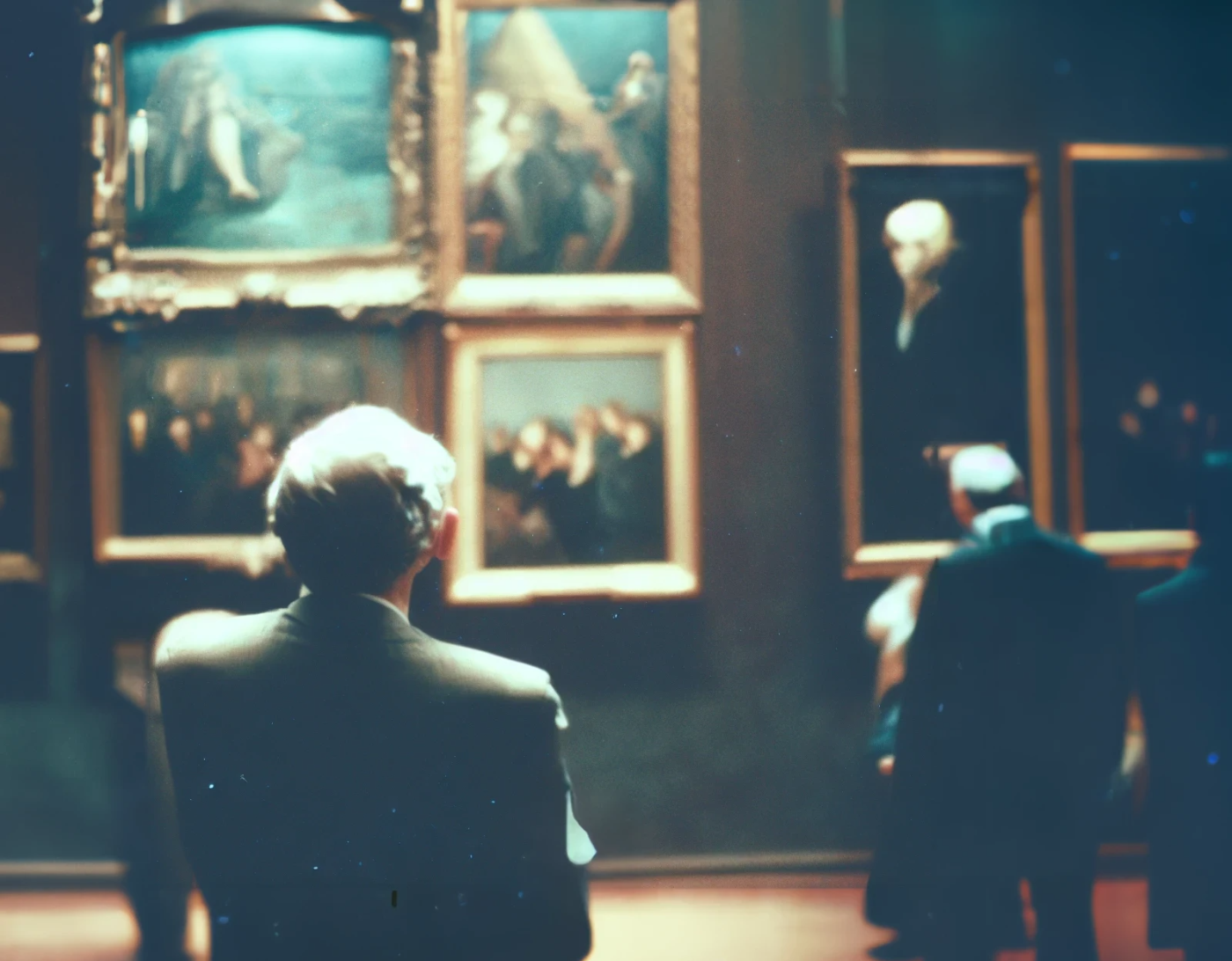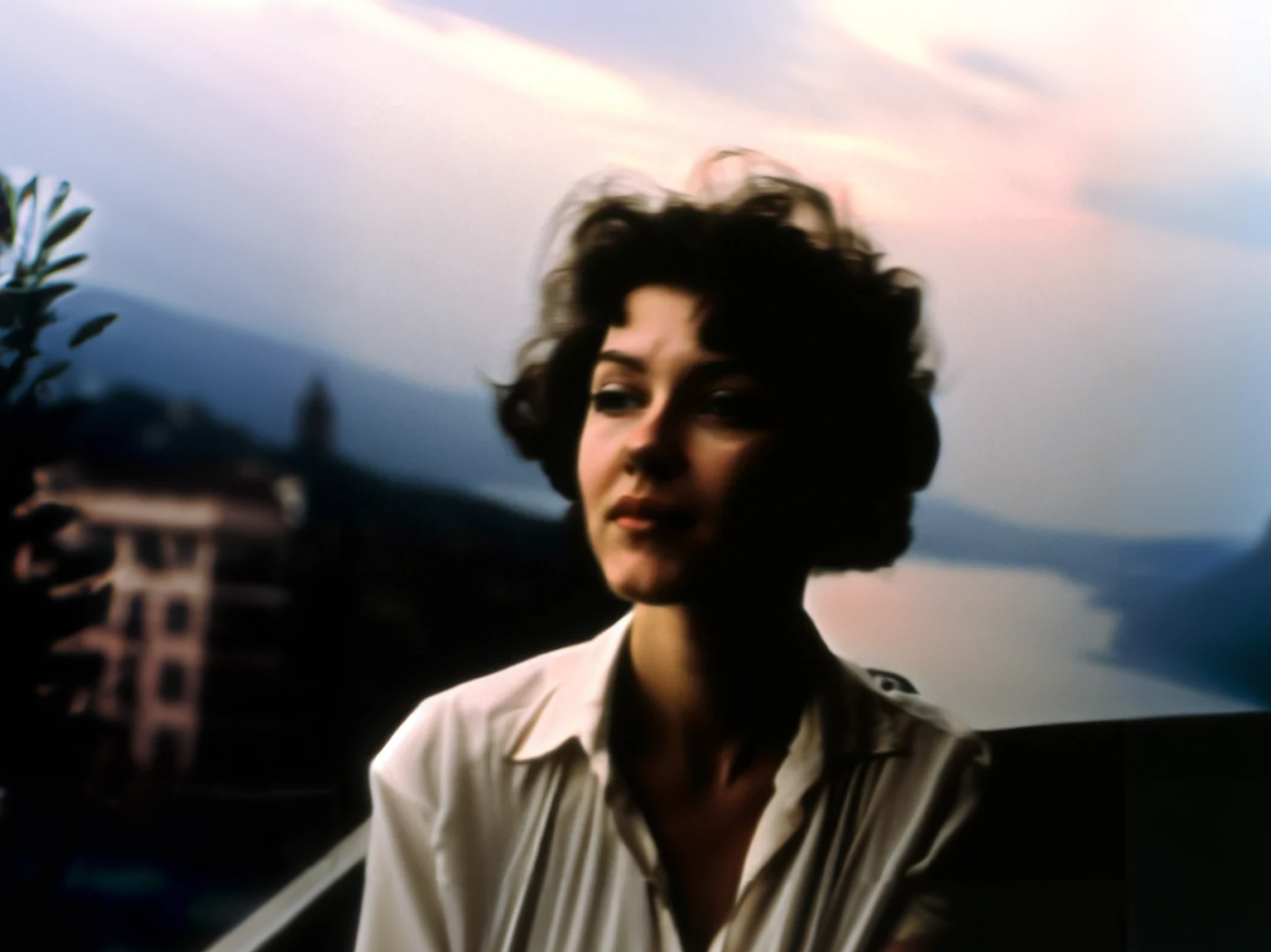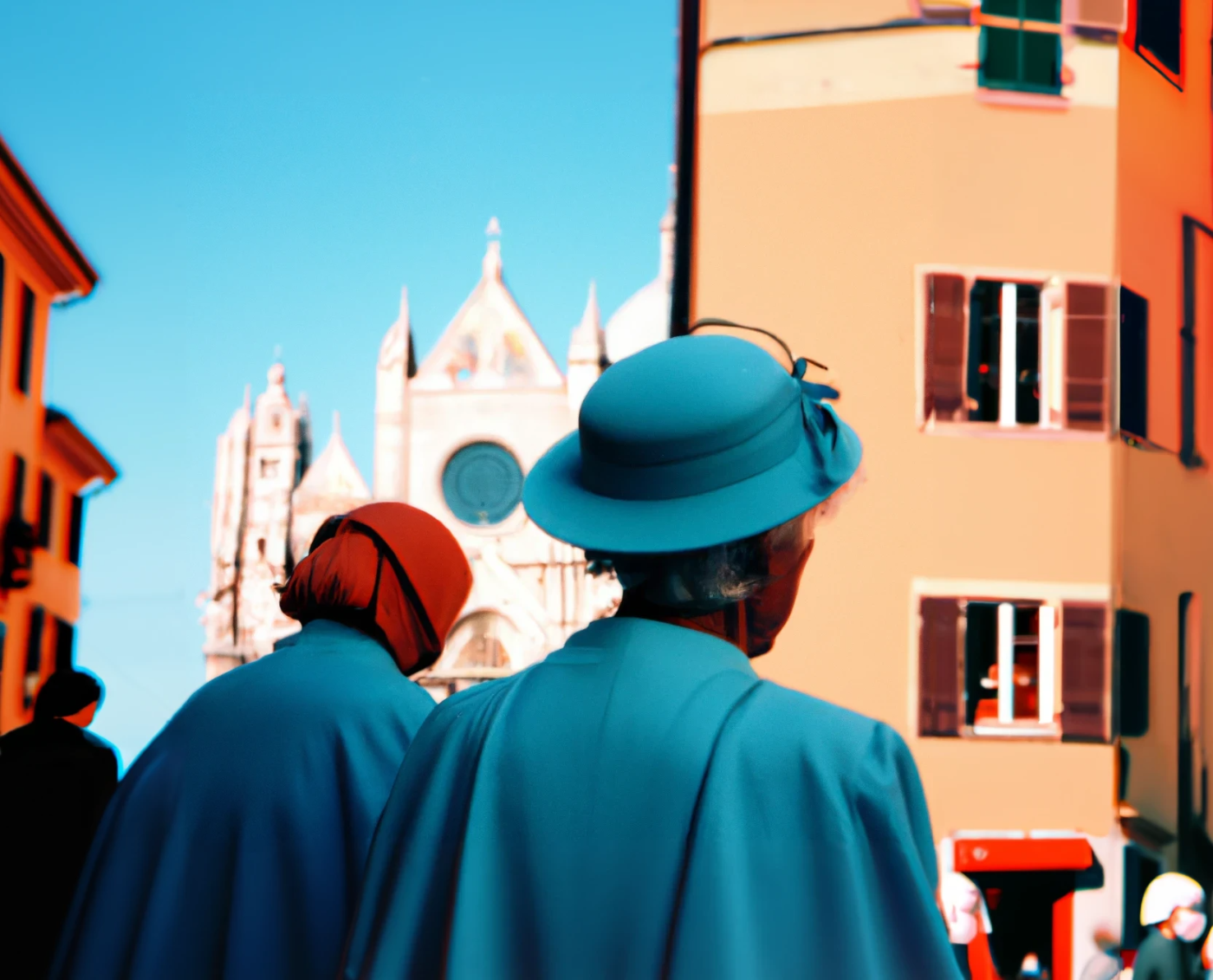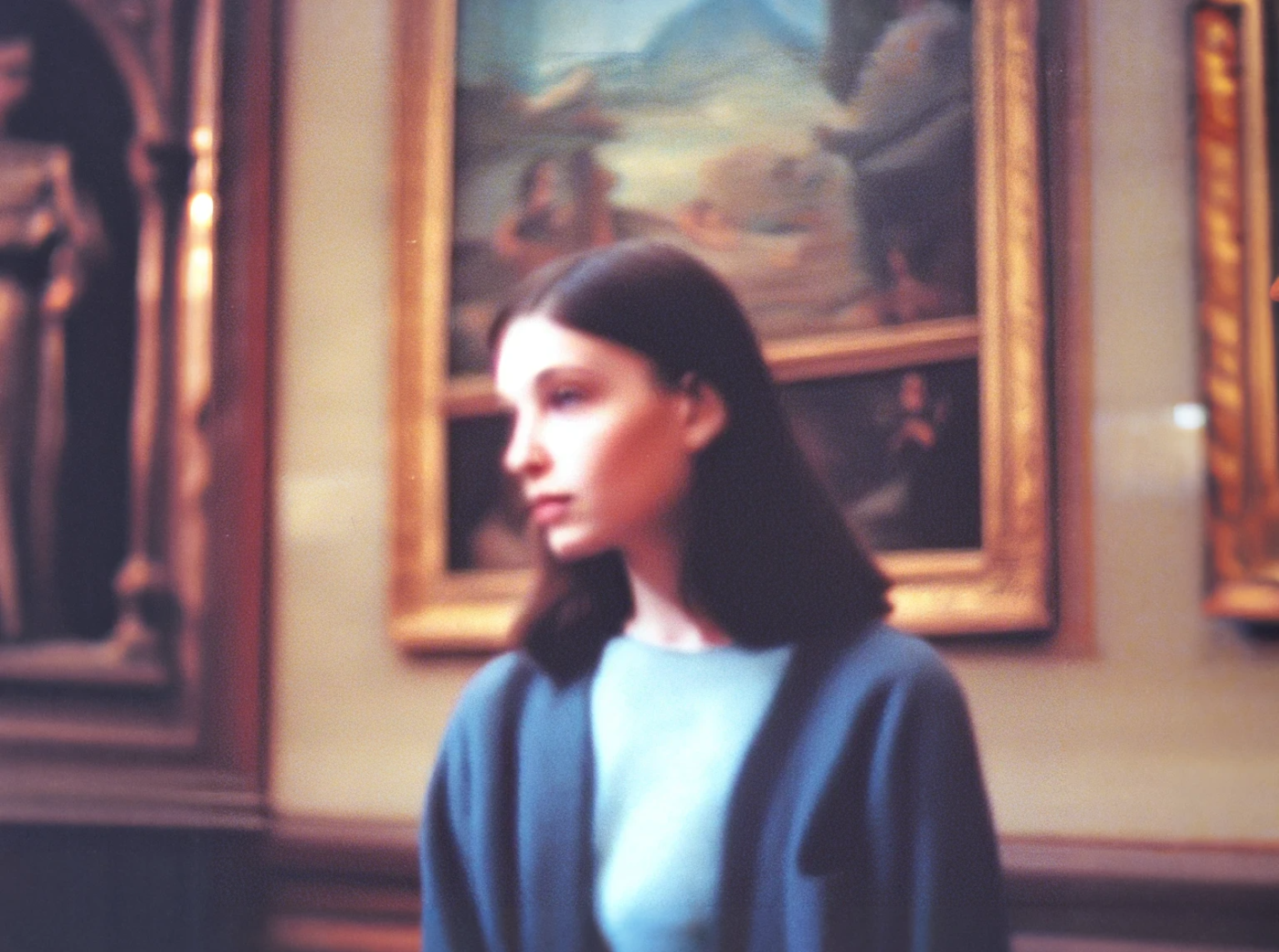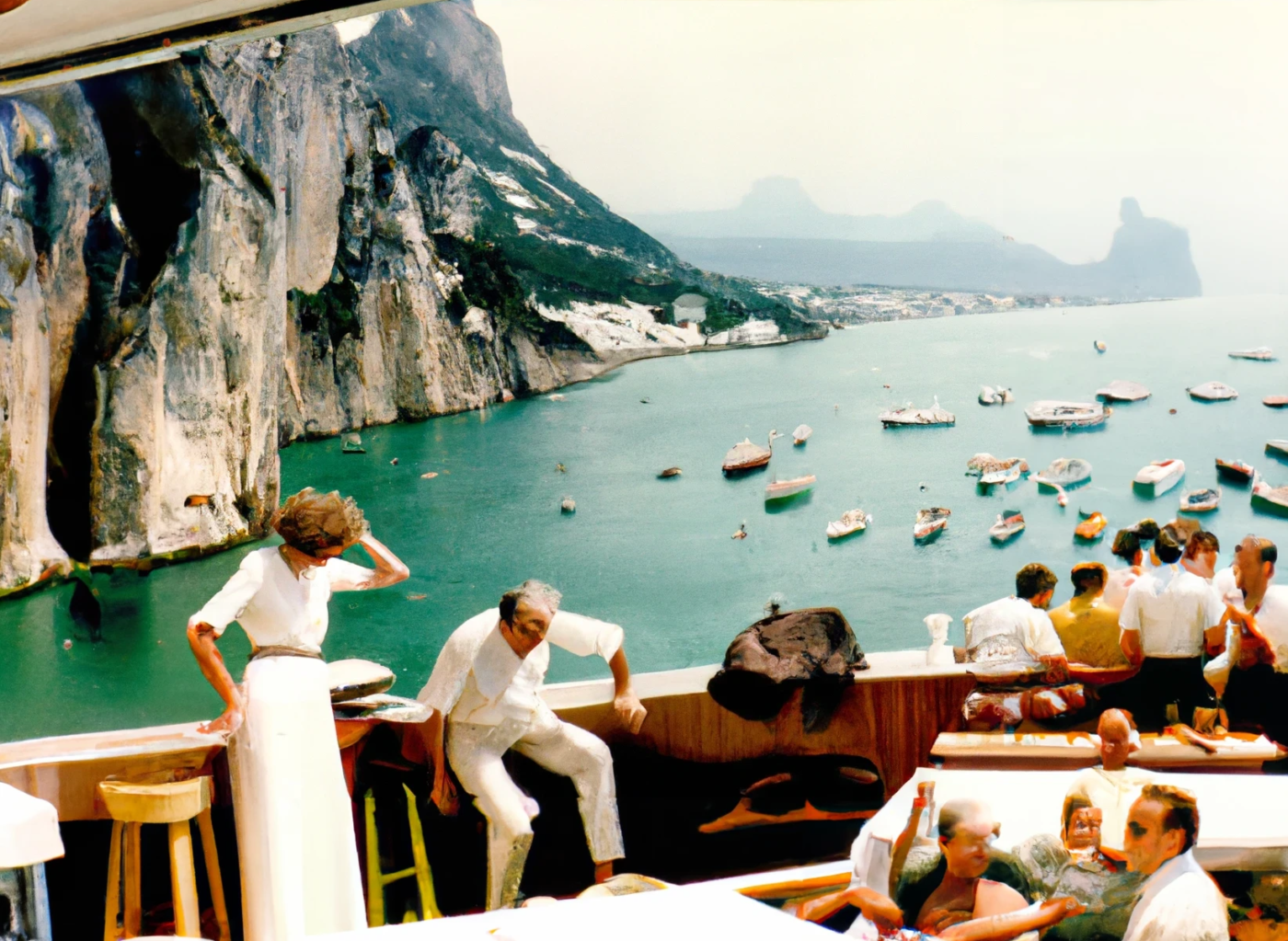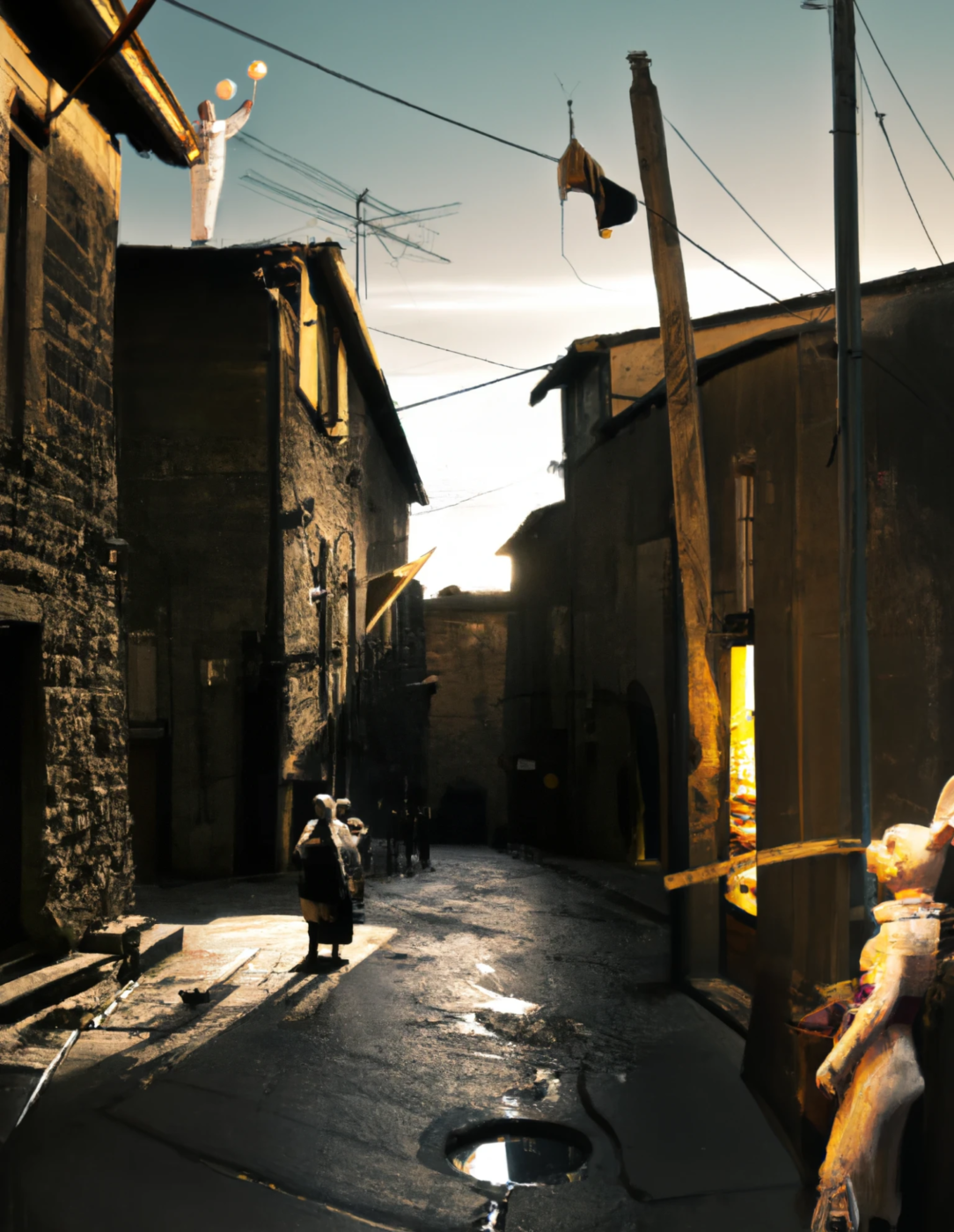There’s a fair-haired woman with a delicate side profile who looks very familiar; at the Uffizi, she’s gazing up at what might be a marble Roman bust. There’s a red and white boat bobbing on Capri-esque waters, with a couple inside who look strangely like your parents in the 70s. Are these paintings? Are these photographs? Are these dreams?
Created using artificial intelligence, conceptual artist Roberto Beragnoli’s images are like scenes from a family photo album; they are familiar, yet also strange. His Journey to Italy series in particular plays on the idea of visual memory, using digital technology to create alternative visions of Italy that reimagine its drama, allure, idiosyncrasies, and ironies through explorations of the “everyday”. The truth is, these scenes don’t exist at all. They are data-generated compositions of places, faces, and visual references that can be found everywhere and nowhere.
Originally from a small town called Le Piastre (near Pistoia) on the rolling hills just outside Florence, Beragnoli spent most of his formative years studying and working in the city itself. He grew up with the perception of Florence’s Renaissance artists as “myths” who transcended the human form. Even today, the likes of Giotto, Masaccio, and Leonardo are constant points of reference that fuel Beragnoli’s fascination with the city’s visual culture that has remained unchanged for centuries. The seemingly unlikely combination of university studies in aesthetic philosophy and computer science is what gives his work that intriguing multi-dimensional quality. His approach reflects a deep reverence for historical Italian art, beauty, and tradition, but at the same time, a desire to provoke these same traditions, to see cities like Florence embrace innovation and progression through new ideas and approaches to art-making.
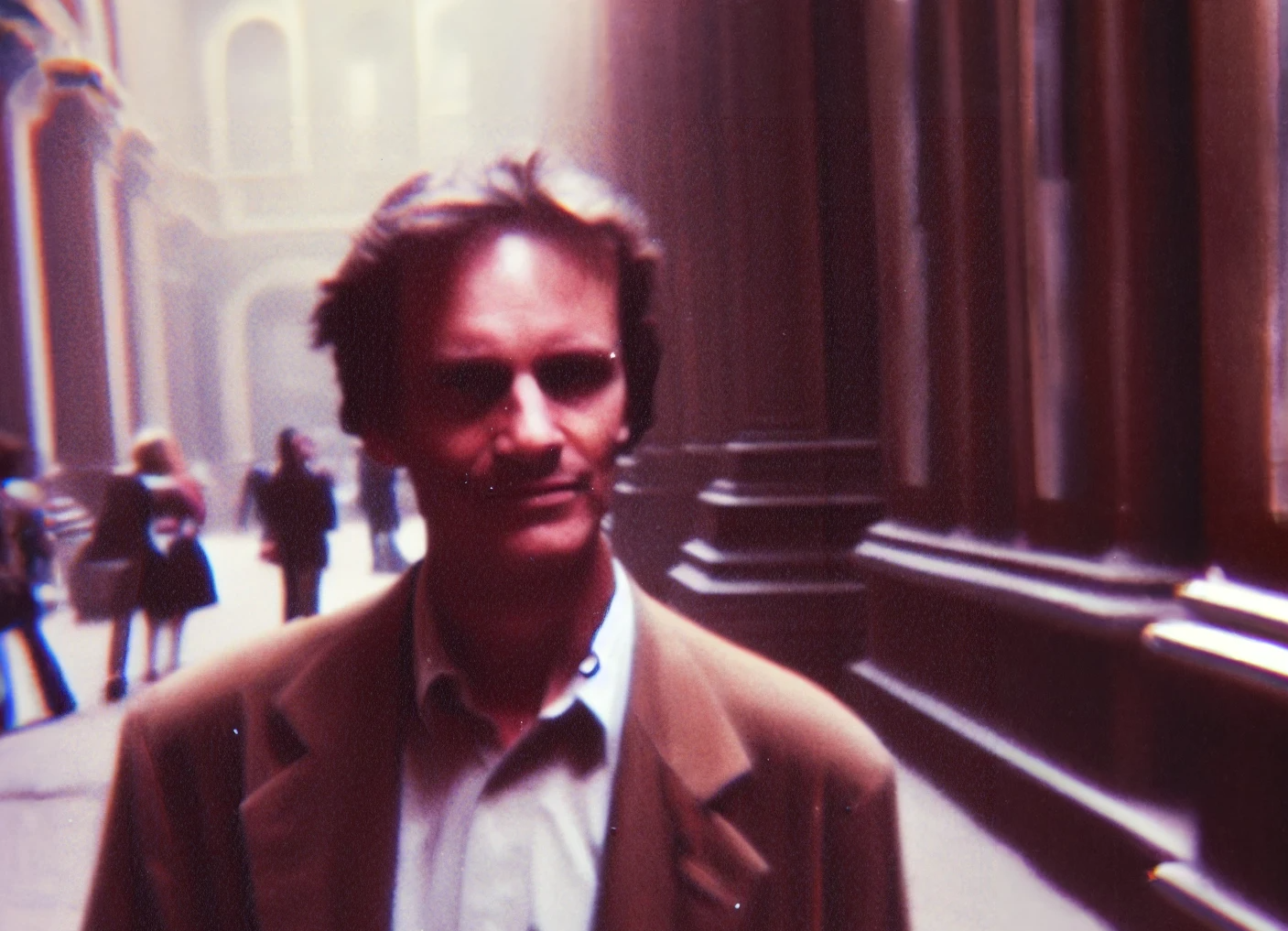
Naturally, Florence plays a leading role in his Journey to Italy series. He has explored the Uffizi in great depth in this body of work, creating scenes featuring the art museum as a blurred, dream-like background. The focus, however, is not who, what, or where is physically represented, but rather the distinct atmosphere Beragnoli achieves in each scene.
The AI artist explains that he wants to present an alternative Florence, noting that people often don’t reflect on the true philosophical and artistic essence of the city–the ideas about life and beauty that exist behind its art and museums. (Plus, of course, there are the queues, bad moods, and an often superficial glance at gilded frames upon finally entering…)
“I want to keep the true spirit of the Florentine artists alive through my work. The artists whose paintings we see in museums like the Uffizi tried to discover something new in their approach; they tried to create new methods, new solutions. I am trying to do the same thing in some way, with Florence as the subject, the protagonist, shown through another point of view,” says Beragnoli.
Honestly, how often do you hear the words “Florence” and “artificial intelligence” in the same sentence? Florence isn’t rich in art history: it is art history. We’re talking about the city attributed to the birth of the Renaissance, the city that was once the center of the Western art world, and the city that has had arguably the biggest influence in shaping Western visual culture as we know it today. Eventually, along comes Beragnoli and AI technology, and an unnervingly exciting new realm of artistic possibilities suddenly comes to life. His process represents a sort of modern Renaissance of its own. The use of digital technology to create brave new worlds has the potential to shake centuries-old traditions of image-making to the core. A contemporary Florence, liberated from its historic-touristic fanfare and stripped back to its cultural essence? For Beragnoli and other young artists working in the city today, this idea is nothing short of thrilling. For others, the idea is probably nothing short of terrifying.
“If you’re a contemporary artist working in Florence today, you must understand that Florence is a tourist showcase–it’s beautiful–but it’s a showcase. It’s not a lab or a school where you can necessarily explore new ideas in art. There seems to be this ideological block in time that means the city is resistant to change, and not welcome to new ideas, new energies, and new art. I think Florence is a victim of history, a victim of its own legacy,” says Beragnoli.
“But when you play with Florence via AI, as I do in my art, you can provoke it in new ways. You have control to change things that would never otherwise change. I want to show the real side of Florence in my work.”

Image by AI artist Roberto Beragnoli
Beragnoli’s artistic inspiration comes from memories of his lived experience in and around the city, and he believes that the true soul of Florence can also (or perhaps only?) be found in the smaller towns surrounding it like Fiesole, Prato, and Pistoia. According to Beragnoli, these Tuscan towns contain the true essence of the city, minus the hysteria of tourists and overpriced plates of pappardelle al ragu di cinghiale.
Grand locations like the Uffizi are of course key reference points for Beragnoli, but so is something as simple as Via Bolognese, a street only 10 minutes from the city’s center, but one that also leads to Fiesole over the hill. “There are hardly any people there, just the Giardino dell’Orticoltura and a lot of peace. You can see all of Florence from the hill, but you’re in nature,” he says.
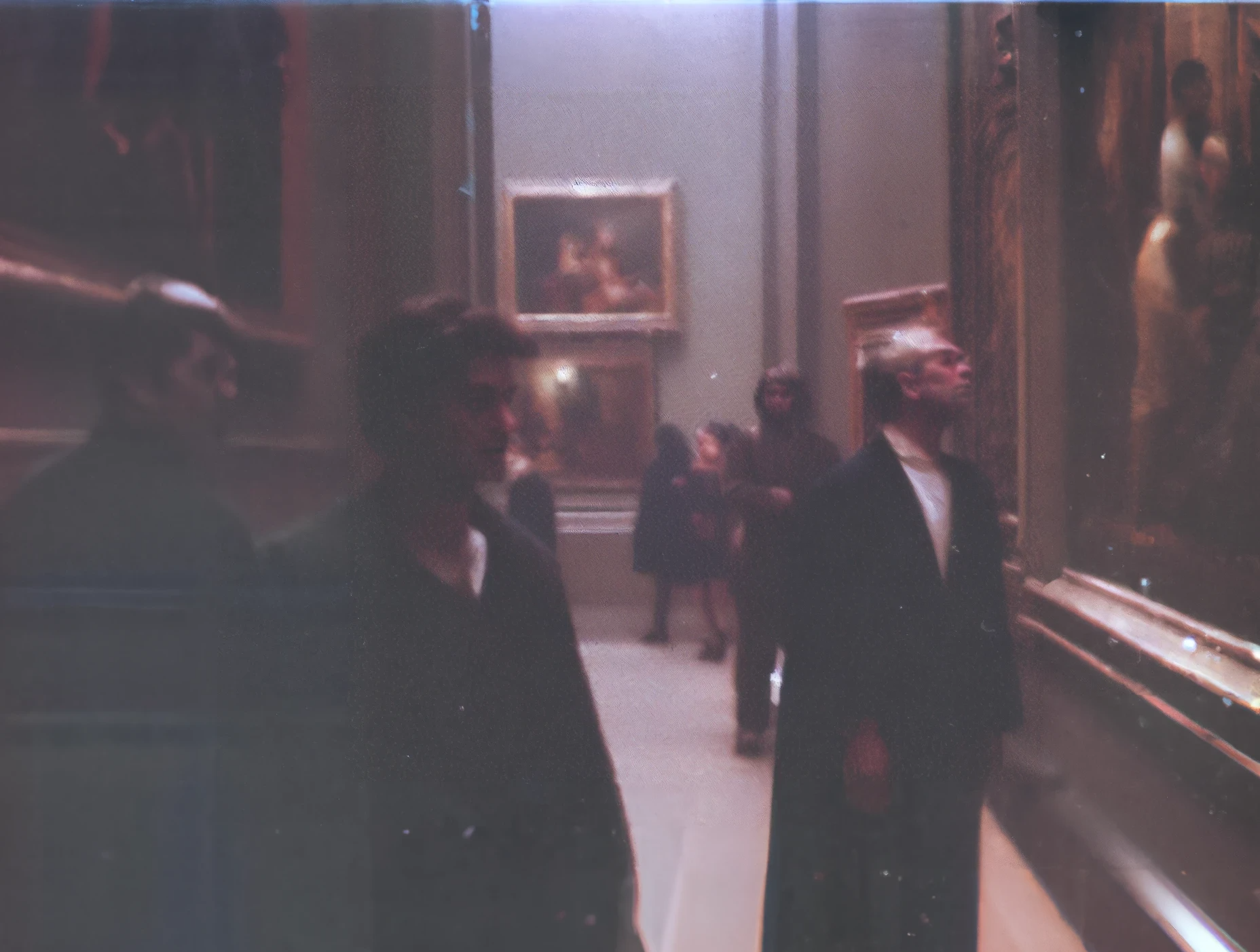
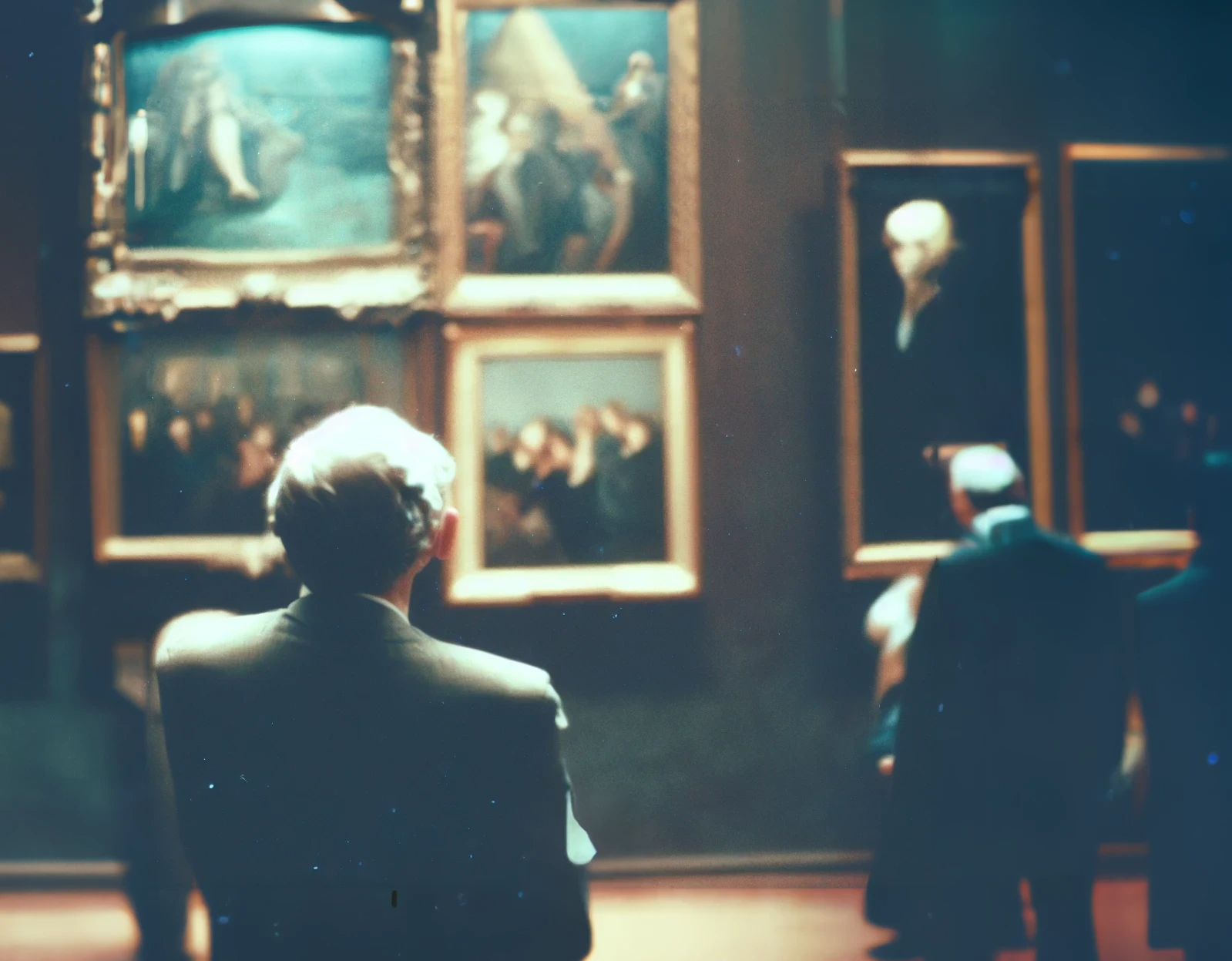
The big question: how are these artworks actually created? Certainly not with oil paint and a brush alla-Giotto. Regardless of whether Beragnoli is evoking a boisterous masked crowd at Venetian Carnevale, or a couple of tanned, linen-clad retirees sweltering in what looks like an Amalfi-Positano-Sorrento restaurant, text-to-image technology is how each work comes to life. He begins with a text description of a scene, an initial prompt that contains information about subject matter, style, textures, and colors. He then uses a specialized AI software program to generate hundreds of images from that same description until he finds one that intrigues him. He manipulates this selected image further, isolating different parts and applying a new set of data instructions to each specific part like a collage. While this process might seem somewhat random, Beragnoli has mastered the art of using this “revolutionary technique” to conjure a distinct atmosphere or to explore a particular social or cultural narrative in greater detail. That is where the artistry and the aesthetic sensibility come in.
Beragnoli’s images evoke a disorientating kaleidoscope of emotions in the viewer. Sometimes we laugh at their ironic accuracy (two nonne dressed in their Sunday-best taffeta dresses, stopping traffic during their passeggiata), sometimes we want to cry at their sense of nostalgia (a shadowy sunset portrait of an alluring brunette), and sometimes we just stare in a sort of mesmerized trance, trying to understand why these images seem to be truer than our memories of visiting, growing up in, or living in Italy for our entire lives.
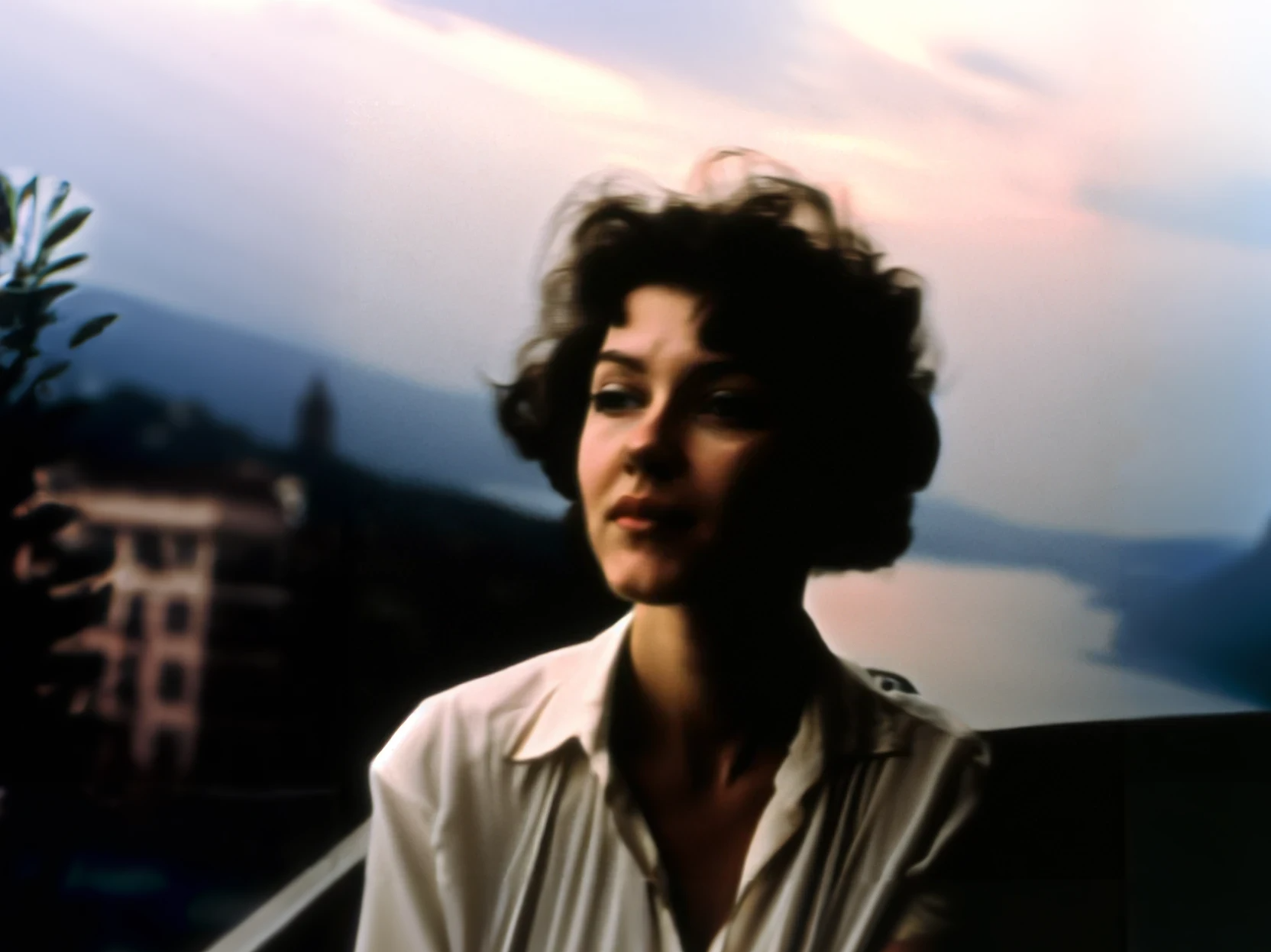
“There are usually two different types of responses to my work. Sometimes people feel a strong connection and familiarity with the ‘artificial memories’ I create; other people are disappointed, even very angry when they realize my scenes represent non-existent events and people,” he shares.
Either way, his Journey to Italy series presents an alternative way of seeing this most-written-about, most-photographed, and most-loved country as the sum of many possible perspectives at the same time. But perhaps the most powerful aspect of Beragnoli’s work is the way he enables a computer-generated, non-existent, and technically “de-humanized” image to evoke something so profound and personal in every viewer; a multitude of emotions, impulses, and curiosities based on the depth of our own memories and lived experiences.
“Ultimately I think this is exactly what art is about; exploring alternative worlds with fictional places and people. In the case of my work, however, you might feel more connected to these images than, say, a painting, because you sense something familiar in them, something that could really belong to you.”
